
Meaning and significance of Swastika-Hinduism sacred symbol
Next to OM, Swastika is the second most sacred symbol of Hinduism symbolizing the eternal cycle of birth, suffering, death and birth. Swastika is regarded as the oldest religious symbol of the human race and is often find in various ancient civilizations like Egyptians, Babylon’s, Mayans etc
Origin of Swastika:
There is no fixed date regarding the origin of this symbol but it is said to be atleast 10,000 years old since it has been in use since the Vedic times (pre-dates 7000 BC). Origin of Hinduism is not traceable but the least thing we know is that it was the religion of Aryans and hence, India was known as Aryavart, meaning Nation of Aryans (Aryan mean ‘Noble’). Some 6,000 years, its name was changed to bharatvarsh, named after a noble king Bharat who brought the entire continent from Iraq in the west to Malaysia in the south under one rule. Even today, India is known as ‘Bharat’. Surprisingly, Symbol swastika was sacred not only in Hinduism but also in all other ancient civilization. Ruins of ancient civilization like Indus valley, troy, Egyptians, Babylon’s, and Mayans have yielded artifacts and seals with symbol swastika.
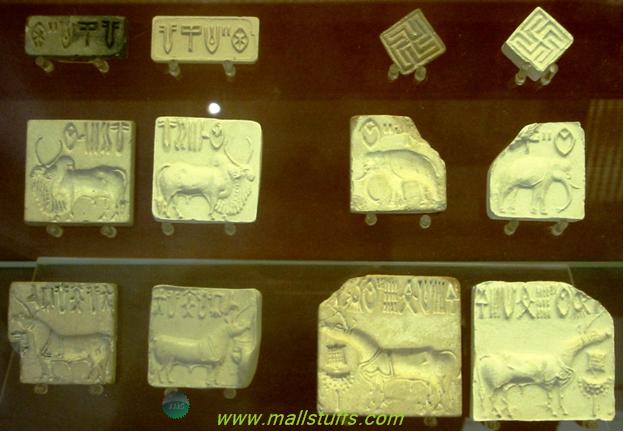
Also this discovery has made India the most ancient civilization which predates all ancient civilization including Egyptians, Babylon’s and Mayans. In fact, there are startling evidences to prove that all other civilizations have their root in Hinduism which I shall cover in a separate post. ’Check this link of Hindustan times if you dont believe <https://www.hindustantimes.com/India-news/NewDelhi/Indus-Valley-2-000-years-older-than-thought/Article1-954601.aspx>
Meaning of Swastika
Swastika is derived from the Sanskrit word Svastika, meaning auspicious or lucky object, and a mark to signify good luck. It is formed by combining three Sanskrit words: Su+asti+ka. Su stands for ‘good’, asti for ‘present, making abode’ and ka stands for ‘making it happen’. So, literally swastika means ‘that which represent good luck or well being’. Swastik symbol is represented by four equal arms, each bending at right angle This shape is obtained by interlacing the letters of auspicious words ‘su’ and ‘asti’ of ancient Brahmi language.
Also, In Sanskrit, Vasa means to inhabit and Vastu means habitation. The amalgam of words ‘Vastu’ and ‘Su’ (Pronounced as 'Swastu') means ‘a good habitation’.
Swastika is widely considered as a religious symbol aimed at bringing fortune, good luck, happiness and prosperity. In India, priest often uses the expression svasti svasti svasti to wish for their health good luck, well being, and prosperity!
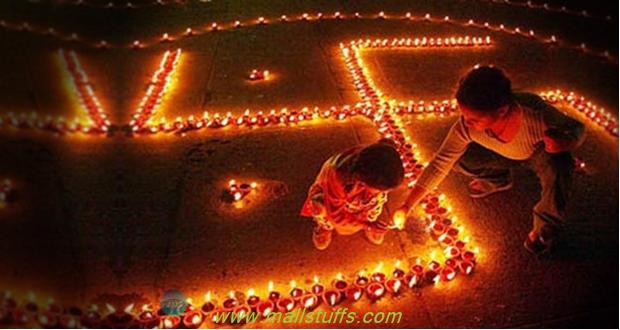
Children creating Swastika during Diwali celebrations
Swastika in vedas
Rigveda- the first recorded text of human history has symbols of swastika. Though there is no mention of its meaning, this symbol definitely symbolized goodness peace and love.
In Yajurveda, Swastika is appraised as “swasti na indro vruddhastravaha svastinah pusha vishvavedaha! Swasti nastakshya arishtanemihi svastino bruhaspatirdadhatu!!” meaning, “May all mighty god of infinite glory be auspicious to us, May the all knowing Lords of the universe be of auspiciousness to us. May the powerful protection of the universe bring auspiciousness to us May the Lord of Lords. The supreme being brings fortune to us.”
What swastika represents
Swastika is also used to represent supreme divine creation of god. In Hinduism, this divinity often means revolving sun, four poles with stars revolving round the poles, four quarters of the moon, a whirlwind movement, four yugas, the generation of the cycles, the wheel of life, four aims of life etc
In short, symbol swastika which can be best summarized as
1. Stability & Firmness: if the Swastika is turned clockwise of anti-clockwise, it does not have any physical or geometrical changes. This represents the unchanging, all directional, all-encompassing and endless nature of god. So, it signifies stability and firmness and hence, id very important for weddings, home/business openings and other similar ceremonies
2. The Sun's Rays: In this case, four lines extending from the central dot represent the rays of the sun, extending to four directions- East, West, North and South. Another meaning of "Swastik” is ‘mark of the sun’, formed by combining two Sanskrit words - "Swa" meaning Sun, and "tik". So, the swastika symbolizes Surya, the sun god, and is often shown with Ganesha sitting on top of lotus flower. In Hinduism, Ganesha is considered as remover of obstacles and difficulties and so, is often represented by the swastika.
Out of all natural objects, special emphasis was given to sun because sun is the mightiest and most useful of all natural objects and since the earliest of man first did agriculture and farming, they worshipped sun thus making swastika a very common symbol to represent sun. Right side of Swastika signifies sun rotation, starting from the northern hemisphere, then proceeding to east, south and finally west.
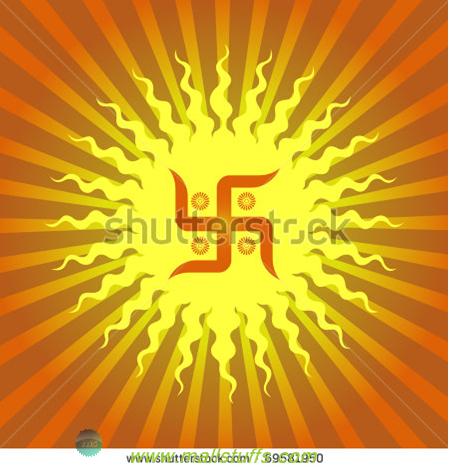
Swastika in sun
3. Lord Vishnu's Symbol: As per vaishnavism, swastika is one of the 108 symbols of lord Vishnu, the sustainer of holy trinity Brahma, Vishnu and Mahesh.
4. Peace & Prosperity: It is one of the sacred symbols aimed at maintaining peace and prosperity in home, office and personal/family life. Hence, swastika is often drawn with vermillion powder under tulsi plant or as a decorative symbol on metal pots, kalash and similar vessels used in Hindu rituals.
Hinduism actually uses swastikas in two ways, the left-facing and right-facing swastikas. These two forms of swastika represent the two forms of lord brahma, right-facing swastika symbolizing the evolution of the universe (Pravritti) and left-facing swastika symbolizing involution of the universe (Nivritti).
When to use swastika
Swastika can often be found in first page of Indian notebooks, textbooks. If swastika symbol is not added by publisher, then the buyer of the book adds a swastika symbol at the start of the page. In religious ceremonies, swastikas are made from vermilion powder mixed in water. Swastika is drawn on new vehicle, invitation cards, wedding cards, gifts, etc. Besides, Swastikas can be found in many decorative vessels, wedding altars, furniture, floor and wall painting in traditional Indian houses and temples.
This symbol is often found in forehead of Indian sages and Brahmins and is called as bindu or tilaka.

Young Brahmin with swastika on head
While aum is a primordial tone of creation, Swastika is a pure geometrical mark with no syllabic tone associated with it.
Swastika in Buddhism
When Buddhism included swastika symbol in their culture, they termed it as ‘manji’. This symbol appears at the start of all Buddhist scriptures. Since the right facing swastika was related to Nazism, Buddhist scholars started using left-facing swastika in their scriptures since the inception of holocaust.
Swastika symbolizes a human who have attained nirvana (Salvation) from the repetitive cycle of birth and death. So, the symbol is often viewed as a sign of affluence, good luck, wealth, fortune, abundance, long life, Universal harmony and balance of opposites. The symbol of Swastika is quite popular in Korea, Japan, Thailand, other Buddhist countries and is often shown in decorated clothes and paintings.
Swastika in Jainism
Contrary to Hinduism which regards ‘Om’ as the most sacred symbol, Jainism treats ‘Swastika’ as their most sacred symbol. Swastika represents the emblem of their seventh guru ‘Tirthankara Suparsva’. In Year 2001, government of india introduced a 100 rupee coin to celebrate the 2600th anniversary of mahavir birth, their 24th and last Tirthankara.
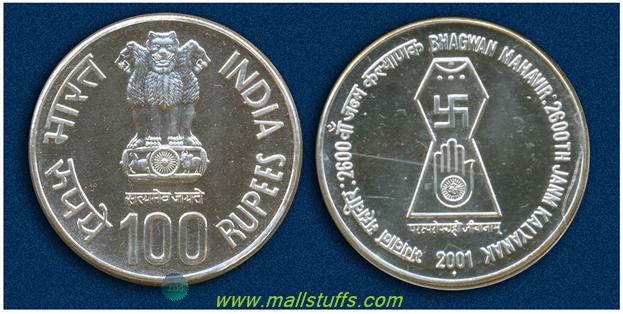
According to few jain gurus, Swastika denotes the four possible places of rebirth, namely heaven, hell, earth and animal or plant world. Svetambar (श्वेताम्बर) Jain tradition considers swastika as a symbol of the ashta-mangalas (अष्ट मंगल). All jain temples and religious scriptures contains swastika smbol and no religious rituals or ceremonies starts without creating several swastika mark with rice around the altar bonfire. A ripe or dried fruit, sweets, coin or currency note os then offered on this swastika symbol. Even the religious flag of Jainism has swastika at the absolute center.
Swastika In yoga
In yoga, there is an exercise called as "Swatikasana", meaning auspicious posture, in which the feet are rested on opposite thighs with criss-crossed legs.
This yogic posture signifies that the path of our objective is not straight, and may take unexpected turns. So, one need to use intellect and focused mind to solve problems thereby attaining divinity. Symbolically, the swastika's four cross arms stand for four aims of human life (purushartha) which are righteousness (dharma), wealth (artha), love (kama) and moksha (liberation). Thus, this symbol can be called as the emblem of Sanatana Dharma (Hinduism). It also represents the wheel of Maya (illusion), where the person is trapped in the worldly desires running across the four directions of the world, instead of aiming to reach the fixed center (God).
Similarly, a well known yogic posture done early morning is surya namaskar, which literally means sun worship or sun salutation. This posture is aimed at realizing the chakras (Wheel) located within the body. Thus this yogic posture of surya namaskar is represented by swastika.

Surya namaskar
Swastika represents the process of creation and destruction
Swastika also signifies the comic creative process of `the churning of the milky ocean’ which is actually a tug-of-war between the asura(Demons) and devas(Dieties). This `churning' is geometrically represented by a single four armed cross symbol within a circle oscillating backwards and forwards.

Churning of the ocean
The clockwise movement of the cross signifies evolution whereas the anti-clockwise movement signifies dissolution. The circle surrounding the four cross represents the entire universe, called as brahmand in hinduism. This is also in accordance with core concept of hinduism which says universe in itself follows a repetitive cycle of destruction followed by re-creation. The period between the destruction and re-creation is called as pralaya(Great deluge), a resting time between creative periods. This period of creativity constitute a `Kalpa'. This concept has greatly fanaticized western scholars who labeled this concept of Hinduism as ‘the big crunch’ because of the inevitable pull of gravity and an extremely slow process of evolution. But the hinduism calls this evoltionary process as `the exhalation of lord vishnu’ while the dissolutionary process is called as 'Exhalation process of lord vishnu’. This whole cosmic cyclic process of involution, evolution and dissolution is symbolized by the backward and forward movement of the cross.
Four arms of the cross are known as four arms of lord Vishnu , the `preserver' in the Hindu Trinity who maintains order, balance, and cohesion across the whole universe.
If you didn’t understood about this evolutionary and dissolutionary process the read the below post
Science in hinduism-Extraction-Contraction and creation of universe <https://www.mallstuffs.com/Blogs/BlogDetails.aspx?BlogId=128&BlogType=Spiritual>
This oscillatory forward and backward motion symbolizes the positive evolutionary forces and negative dissolutionary forces that give birth to two forms of swastika i.e. right-angled or left-angled. This mystic cross later found its way in all ancient civilization albeit with certain modifications in accordance to their own beliefs. No need to say, even the Christianity cross is an adaptation of the ‘Swastika’ symbol.
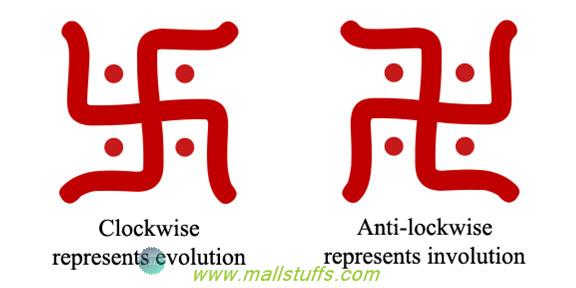

Swastika as a defensive structure
Incidentally Sanskrit word ‘Swasta’ means ‘peace’ or ‘calm’. Thus swastika might be used to represent some defensive structure which also means good habitation, another meaning of swastika.
Some scholars laid out the above concept to explain the ancient forts found in the shape of ‘Swastika’. They said creating forts in Shape of swastika was meant for defensive purpose. Under such an arrangement, it is very difficult for any enemy to storm in all parts of the fort or co-ordinate with each other.
Such kind of arrangement is mentioned in Mahabharata ‘Chakra-vyuha’, an ancient military practice to defeat the enemy. Chakrayuh was arranged by kuru warrior drona to kill Arjuna's son Abhimanyu. Briefly, this story is as follows:
When arjuna wife Subhadra was pregnant, his brother lord Krishna would relate many adventurous stories to humor her. Once, while lord Krishna was narrating the technique of breaking Chakra-vyuha, Subhadra went into a slumber. But somehow, yet to be born abhimanyu was listening carefully to the narration of lord Krishna.
When lord krishna didn’t receive any response from subhadra for a long time, he turned back and saw subhadra having a nice nap. By then, lord Krishna had narrated about breaking seven layers of chakra vyuh. On seeing subhadra asleep, he stopped narrating and went back to his palace. Unfortunate Abimanyu who listened about breaking the top seven layers, was not able to get any information about breaking the remaining layers. When Mahabharata war started, and nobody knew how to break the chakravyuh, abhimanyu came forward and broke one circle after another to reach the seventh layer. Since he had no knowledge about breaking the next layer or going back, he died after a valiant fight against many kuru warriors.
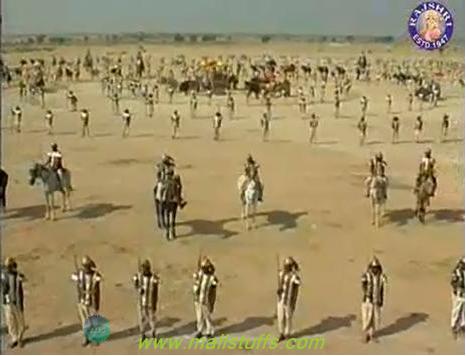
Chakra vyuha formation as shown in television serial Mahabharata
Similarly, Swastika might have been used as a defensive structure practically very powerful and well protected.
Today, swastika has been a sacred symbol of prosperity, luck, peace, harmony, eternity, the four directions (north, south, east, west,) well-being, the circle of rebirth, wealth and many other meanings for several thousands of years, not only in Hinduism but also in other great civilization which I shall take in a separate topic. Just because one man (Hitler) use symbol of swastika as its party flag, one should not try to take away its true symbolism.
Note: Images used on this website
are either a production of Bhaktivedanta Book Trust(https://www.krishna.com), Iskcon
Foundation or were found in google search under "Free to use and share". If any
of the images presented here violates copyright issues or infringes anyone copyright
or are not under "Fair use", then please bring it to our notice. Read
Disclaimer for more.
Share this to your friends. One of your friend is
waiting for your share.
Related Articles
No violence against animal in hinduism
Use of swastika in American manufacturing industry
Science in Hinduism-Place value and Decimal number system
Are Egyptians ancestors Indian in origin
India most sacred river saraswati found
Rama Sethu-Proof of India great ancient science
How many Gods in Hinduism
Science in Hinduism-Motion of earth around sun
Is Goddess Durga the supreme universal mother
Science in hinduism-Embryology in Bhagavad purana
Post Comment